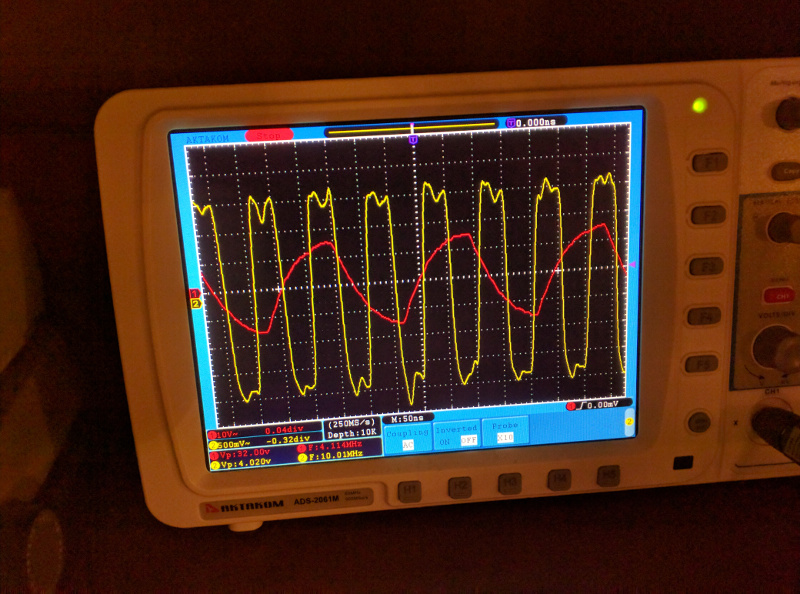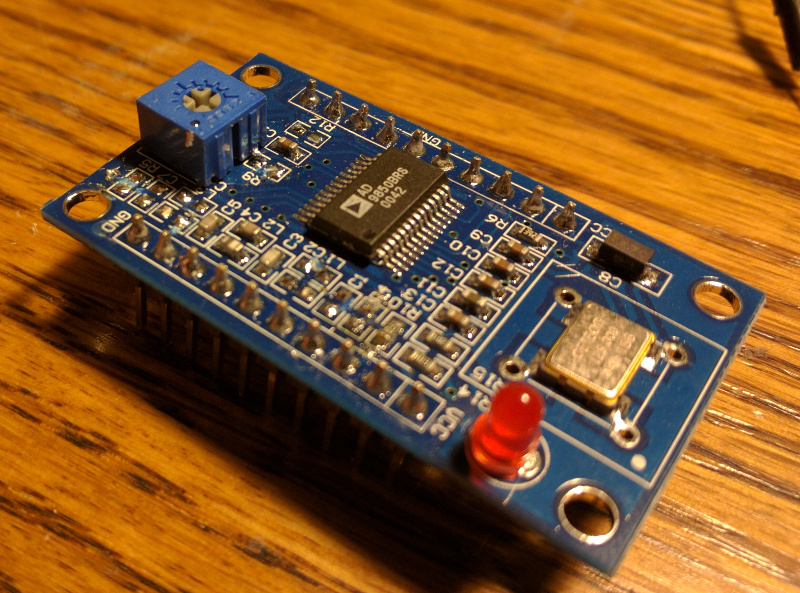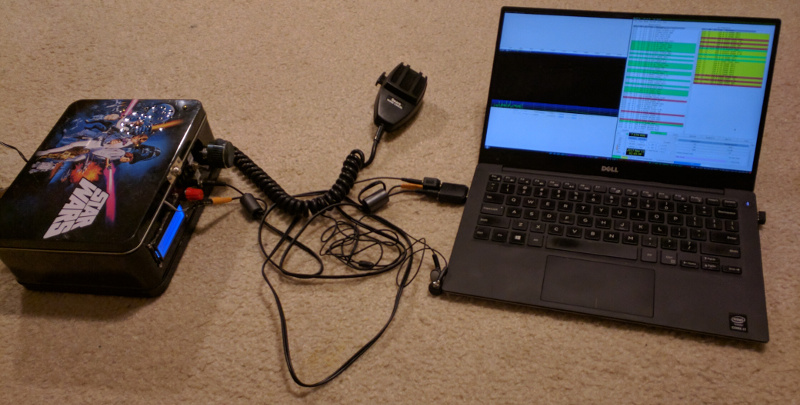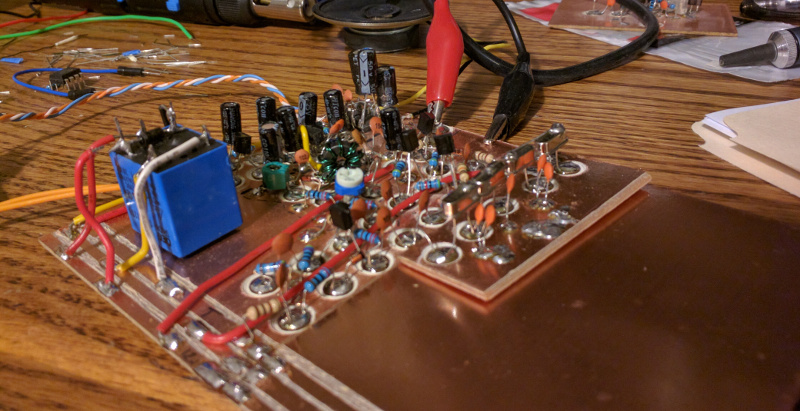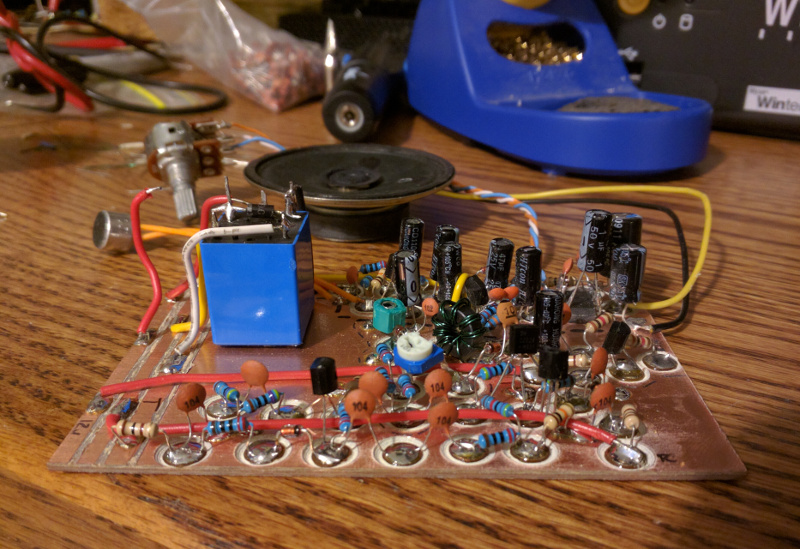I’ve got the main bitx board built enough to test, so now I need the bfo and vfo. I put together an arduino nano, an si5351 breakout board, and a small oled display on a breadboard. I modified some of the vfo code I’ve used before and soldered clk0 and clk2 to the bitx with some rg174 coax.
I don’t have a 20 meter antenna up yet, so I can only test with a signal generator.
I received the parts I needed to continue the bitx 20 project. What I was mostly waiting for was more diodes for the mixer and a suitable RF transistor. The schematic calls for a 2SC2570A for the RF amplifier section, but I couldn’t find one. Looking at the datasheets, the KSP10 looked to be a good match, so I picked up a few of those. The rest is just following the schematic.
I’m waiting on parts to finish up my bitx 20 project so I started working on a home brew mept (manned experimental propagation transmitter).
At first, I was going to build a simple crystal controlled transmitter, but I had an extra AD9850 module laying around and decided to go with that.
This is the AD9850 module that I started with.
In researching the module, I found that the module, as designed, is not a good fit for what I am trying to do, but with a few modifications, it should work okay.
I had a few projects planned over the weekend, but I didn’t get any of them done. Instead, I rigged up my star wars bitx 40 to the computer to try my hand at jt65.
I soldered a headphone jack to two dupont cables and plugged them straight into the mic input on the board. I just triggered the ptt manually.
It worked okay, I ended up with two contacts using 5 watts.
Moving along the schematic, the next step in my bitx build is the crystal filter and the post mixer if amps.
I tested all of the 10MHz crystals that I had and picked the four that were closest in value and put them together on a small board. I wanted to keep the filter on its own board and “separated” from the rest of the circuit so I could switch it out if I decided to switch bands later on.
Last night I added the second set of if amps (orange) that are after the crystal filter.
